Transform Your Living Space with Green Home Solutions
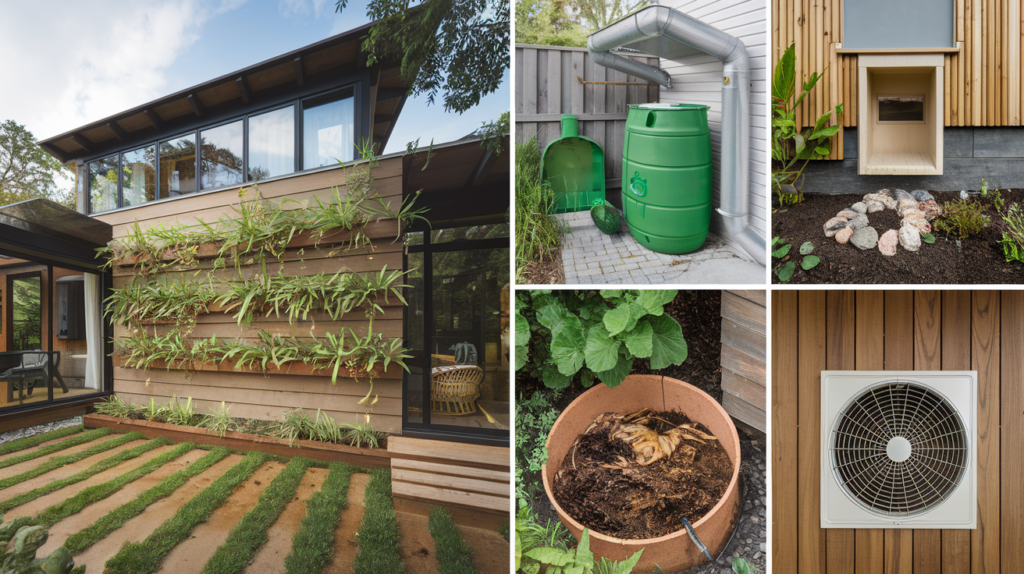
Did you know that traditional homes account for nearly 40% of global carbon emissions? This staggering figure reveals how our homes significantly contribute to climate change. As environmental awareness grows, more people are turning to green home solutions—practical, eco-friendly changes that reduce our carbon footprint while improving our living spaces. From energy efficiency to water conservation. These sustainable solutions are not just beneficial for the environment but also for our health and wallets.
Adopting green home solutions is essential for building a sustainable future. Improving our quality of life and making our homes more eco-friendly and energy-efficient.
Understanding Green Home Solutions
Green home solutions refer to eco-friendly modifications and innovations that make homes more energy-efficient. Reduce environmental impact and promote sustainable living. These solutions encompass everything from energy-efficient appliances to renewable energy sources and water conservation methods.
Adopting green home solutions is crucial not only for the planet but also for personal well-being. A sustainable home helps reduce carbon emissions, conserve natural resources, and even lower utility bills. Additionally, green homes often create healthier indoor environments by improving air quality and reducing exposure to harmful chemicals.
Energy Efficiency
Insulation and Windows
Proper insulation and energy-efficient windows play a vital role in reducing energy consumption. A well-insulated home retains heat in the winter and stays cooler in the summer, minimizing the need for heating and cooling systems. Similarly, energy-efficient windows reduce drafts, helping to maintain consistent indoor temperatures.
Green home solutions like installing high-performance insulation and double-glazed windows are investments that pay off in the long run by lowering energy bills and enhancing comfort.
Renewable Energy Sources
Renewable energy is a cornerstone of green home solutions. Options such as solar panels and wind turbines can generate clean energy for your home, drastically reducing reliance on fossil fuels. Solar panels, for example, convert sunlight into electricity, offering a sustainable way to power your household appliances and lighting systems. Wind turbines, although less common in urban areas, provide another excellent green energy source, particularly in windy regions.
Investing in renewable energy solutions not only reduces your environmental footprint but can also qualify you for government incentives and rebates.
Water Conservation
Low-Flow Fixtures
Water conservation is an essential aspect of green home solutions. Installing low-flow showers and faucets can significantly reduce water usage without compromising performance. Low-flow fixtures work by limiting the water flow rate, helping you conserve water while still enjoying a powerful shower or efficient tap use.
By switching to water-saving fixtures, homeowners can lower their water bills and contribute to the global effort to preserve this precious resource.
Rainwater Harvesting
Another innovative solution for sustainable water use is rainwater harvesting. This process involves collecting and storing rainwater for various household uses, such as gardening, toilet flushing, and even laundry. A basic rainwater harvesting system consists of a collection surface (like a roof), gutters, and a storage tank.
Setting up a rainwater system is a cost-effective way to supplement your water supply, especially in areas prone to water shortages. It’s an excellent way to contribute to eco-friendly water solutions while reducing your dependence on municipal water systems.
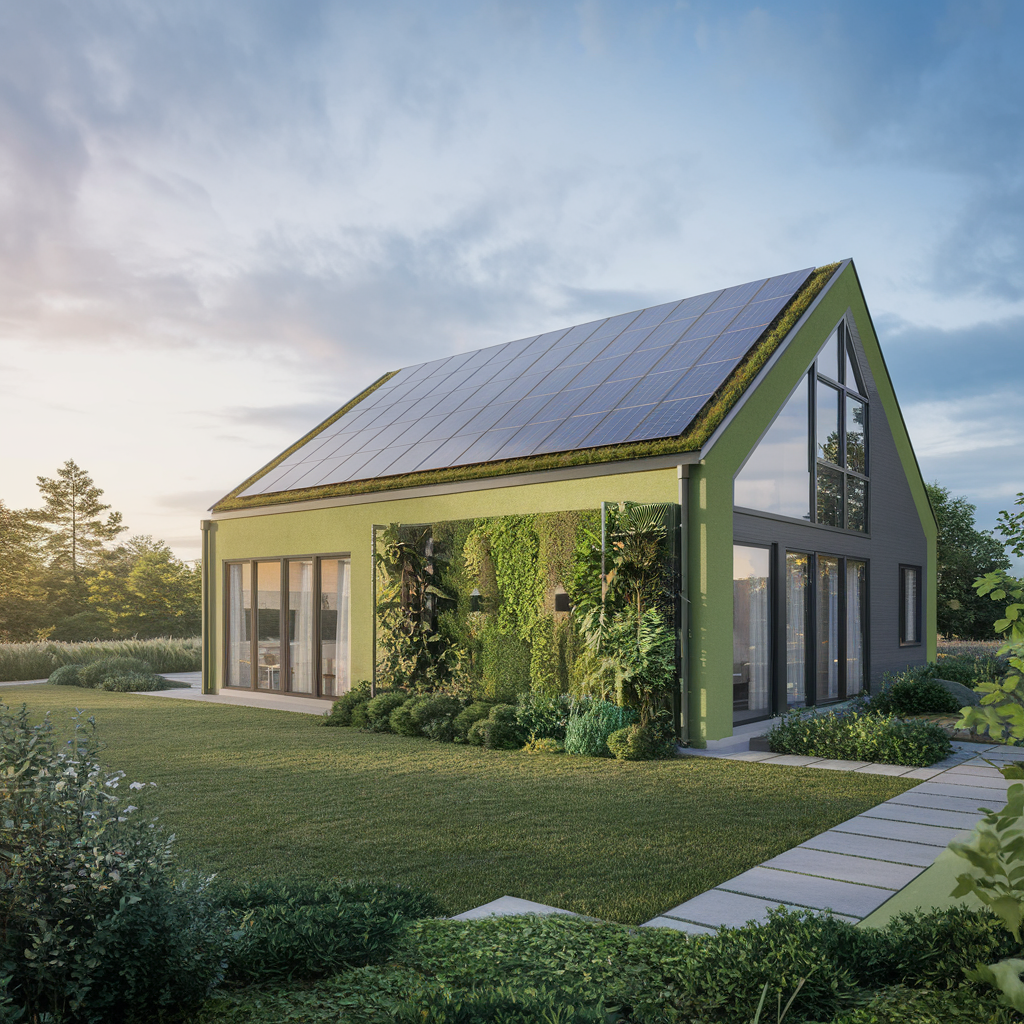
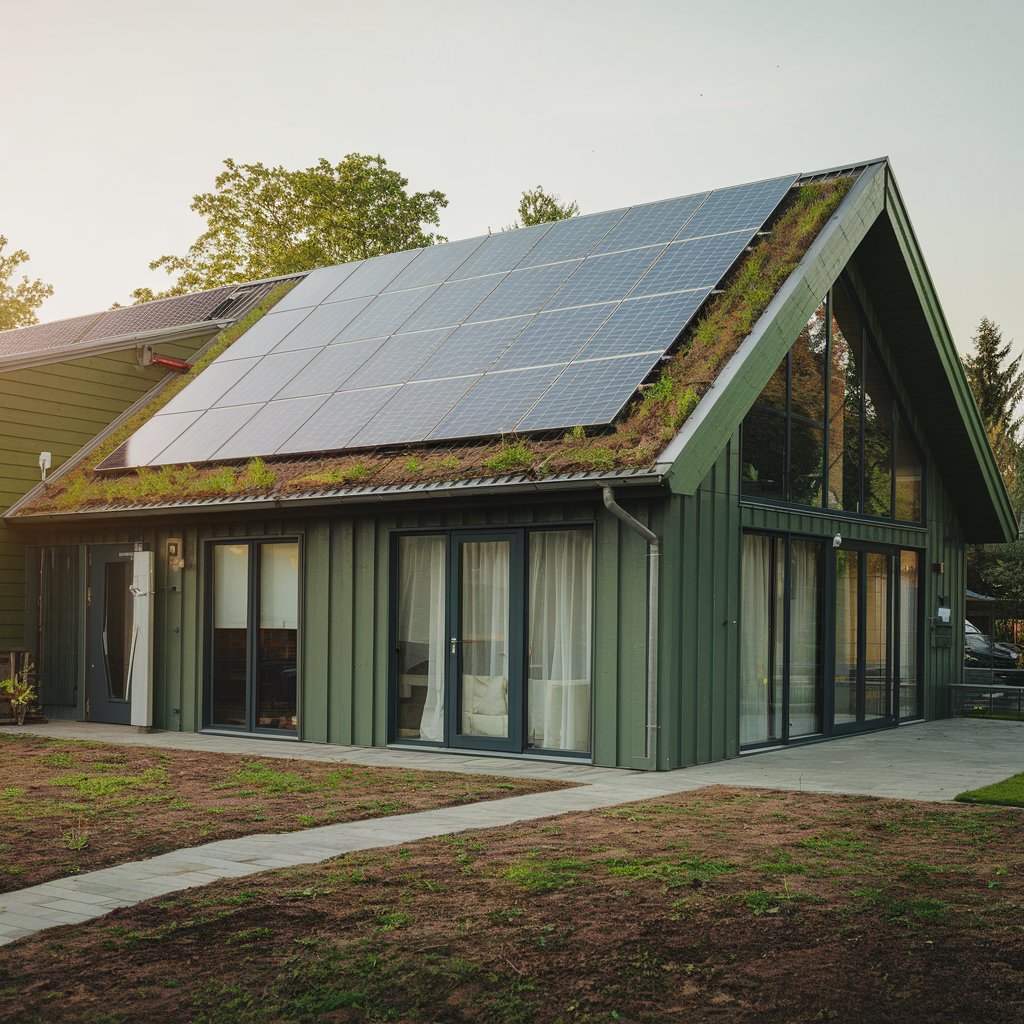
Sustainable Substances and Indoor Air Quality: Green Home Solutions for a Healthier Living Space
When transforming your home into an eco-friendly sanctuary, choosing the right materials and improving indoor air quality are essential. In this section, we’ll explore how green home solutions like sustainable materials and air quality enhancements can elevate both the aesthetic and health aspects of your living space.
Sustainable Materials
Recycled and Reclaimed Materials
Incorporating recycled materials into your home is one of the most effective ways to promote sustainability. From construction to interior decor, using materials like reclaimed wood, recycled metal, and even glass can significantly reduce your environmental footprint.
Reclaimed wood, for example, adds character and warmth to floors, furniture, and wall panels. Not only does it offer a rustic aesthetic, but it also helps reduce deforestation by giving old materials new life. Similarly, recycled metals and glass can be used in countertops, lighting fixtures, and decorative elements, offering modern, sustainable alternatives.
Opting for sustainable building materials is a key element of green home solutions. These materials often require less energy to produce and transport, making them a more eco-friendly option for home construction and renovations.
Non-Toxic Paints and Finishes
Traditional paints and finishes often contain harmful chemicals like volatile organic compounds (VOCs) that can negatively affect indoor air quality. Choosing non-toxic paints and eco-friendly finishes ensures a healthier home environment while maintaining beautiful, vibrant interiors.
Non-toxic paints are free from harsh chemicals and low in VOCs, reducing the emission of pollutants into the air. Whether you’re painting your walls or refinishing your furniture, green home decor choices like these contribute to better indoor air quality and a safer home for your family.
Beyond improving air quality, these products are often produced with environmentally conscious practices, further enhancing their role in green home solutions.
Indoor Air Quality
Air Purifying Plants
Maintaining good indoor air quality is essential for creating a healthy living space, and one of the easiest and most visually pleasing ways to do this is by incorporating air purifying plants. These plants naturally remove toxins from the air, offering an aesthetic and eco-friendly solution to indoor pollution.
Some of the first-rate air purifying flora include:
- Snake Plant: Regarded for its potential to clear out pollution like formaldehyde and benzene.
- Spider Plant: Effective at eliminating carbon monoxide and other impurities.
- Peace Lily: Great for filtering out mold spores, making it ideal for bathrooms and kitchens.
- Aloe Vera: Not only does it purify the air, but its leaves also contain soothing gel that can be used for burns and cuts.
Integrating plants into your home not only enhances decor but also supports your commitment to green home solutions by improving air quality and promoting a healthier indoor environment.
Ventilation Systems
Proper home ventilation is another critical component of maintaining high indoor air quality. Without adequate ventilation, indoor air can become stale, trapping pollutants, allergens, and moisture that can lead to mold growth and respiratory issues.
Installing an eco-friendly ventilation system, such as energy recovery ventilators (ERVs), ensures a continuous supply of fresh air without wasting energy. These systems work by exchanging stale indoor air with fresh outdoor air, while also capturing heat to maintain energy efficiency.
For a comprehensive indoor air quality solution, combining an efficient ventilation system with natural options like air purifying plants is a powerful way to keep your home healthy and eco-conscious.
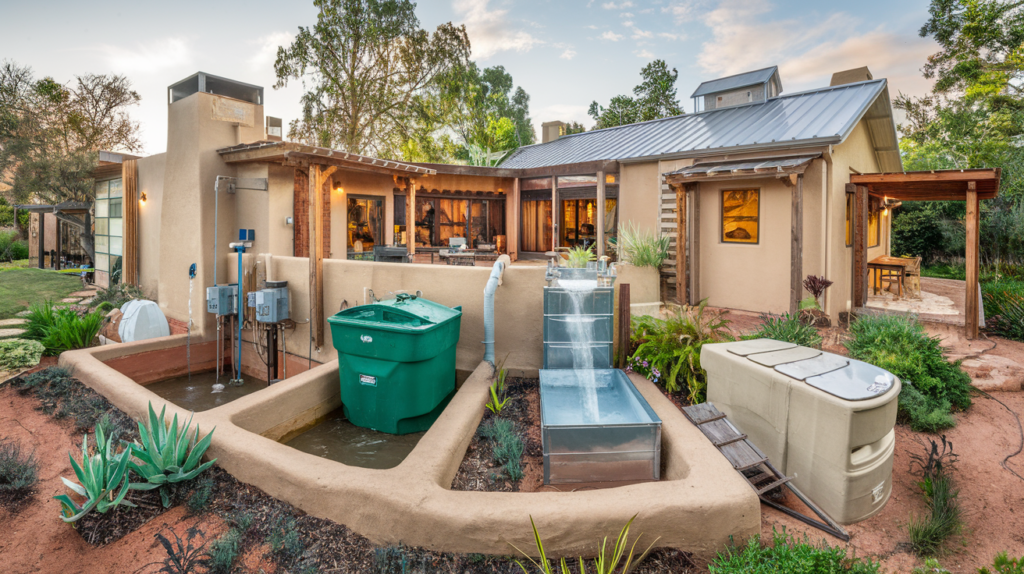
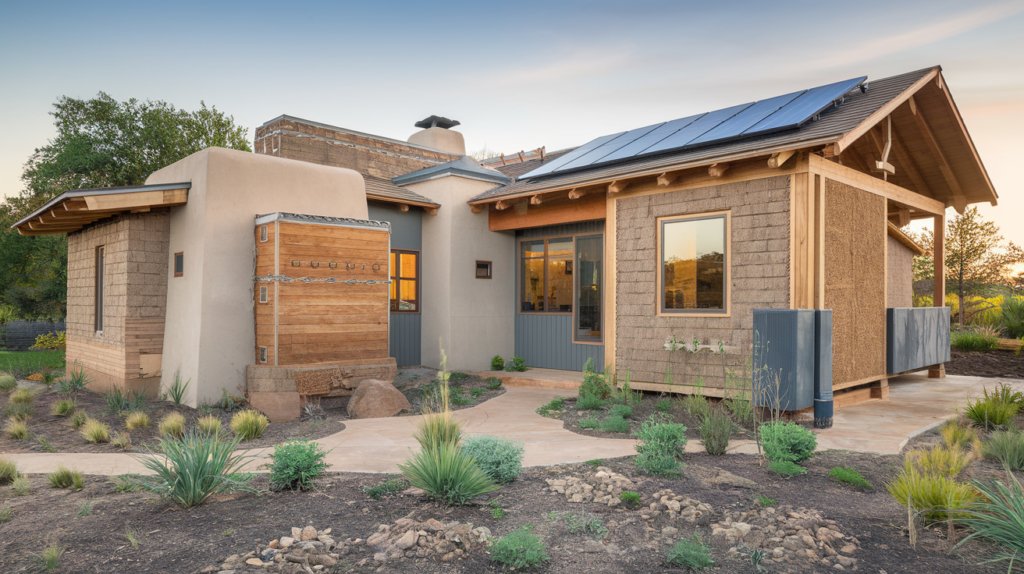
Waste Reduction: Key to Sustainable Living with Green Home Solutions
Minimizing waste is a critical component of creating an eco-friendly home. By adopting waste reduction practices like composting and recycling, you can significantly lower your household’s environmental impact. In this section, we explore green home solutions that make waste reduction easy and effective.
Waste Reduction
Composting
One of the most effective ways to manage organic waste is through home composting. Composting involves breaking down food scraps, yard trimmings, and other organic materials into nutrient-rich soil, reducing the amount of waste sent to landfills. Starting your own composting system at home is a simple and rewarding process.
To get started, you’ll need a compost bin or a designated composting area in your yard. Composting requires a balance of green materials (like vegetable scraps and coffee grounds) and brown materials (like leaves and cardboard). Turning your compost regularly allows air to circulate and speeds up the decomposition process.
Home composting not only reduces waste but also creates nutrient-dense compost that can enrich your garden soil. This is one of the most sustainable ways to recycle organic waste, making it a core aspect of green home solutions.
Recycling Programs
In addition to composting, adopting effective recycling programs is another essential green home solution. Many homes still struggle with proper recycling due to a lack of awareness about what can and cannot be recycled. Implementing clear, organized home recycling systems helps streamline the process and ensures you’re doing your part in reducing waste.
First, check with your local municipality to understand what materials are accepted in your area’s recycling program. Common recyclables include paper, cardboard, glass, plastic, and aluminum. Set up separate bins in your home for these materials to make sorting easier. Recycling properly helps reduce landfill waste and allows materials to be repurposed, reducing the need for new raw materials.
Additionally, some communities offer specialized recycling programs for electronic waste (e-waste), batteries, and other hazardous materials that cannot go in standard recycling bins. Research local programs to ensure you are recycling all possible items responsibly.
By adopting these waste reduction practices, you contribute to a healthier environment, making recycling a crucial part of eco-friendly recycling efforts.
Conclusion
Reducing waste through composting and recycling is a key step in creating a sustainable home. By integrating home composting systems and participating in recycling programs, you can effectively manage waste and contribute to a healthier planet. These simple yet powerful green home solutions not only reduce landfill waste but also encourage a circular economy where resources are reused and repurposed.
It’s time to embrace green home solutions and implement these waste reduction practices in your own home. Start composting, organize your recycling, and make a lasting impact on both your household and the environment.
